Vegan stuffed seitan roast is an elegant main dish recipe that combines flavorful bread stuffing with mushrooms, walnuts, and cranberries rolled inside savory homemade seitan dough.
This is the ultimate vegan roast, and I'll provide the steps and tips you need to make this recipe like a pro.
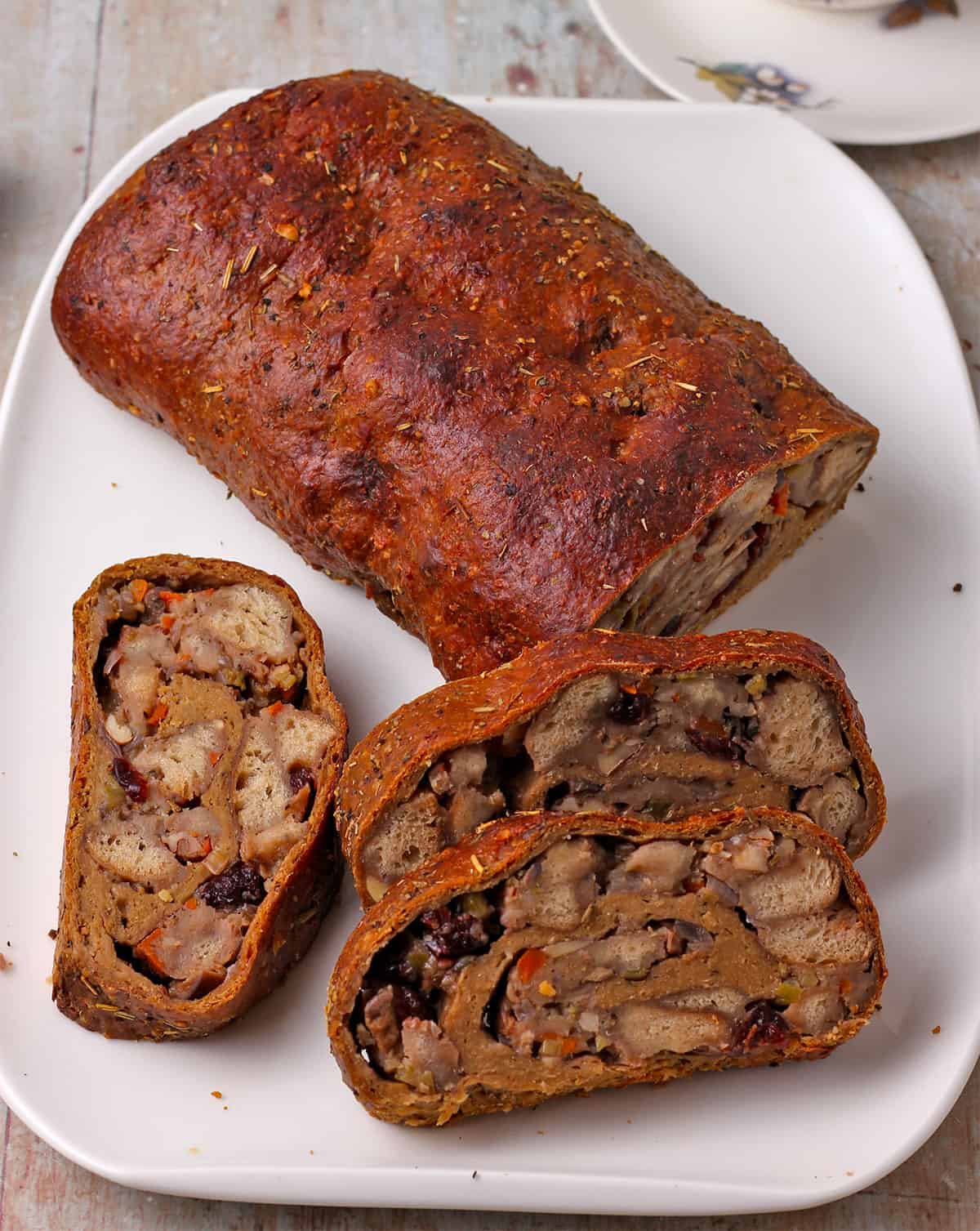
Are you looking for something special for a vegan Thanksgiving, Christmas, or holiday table?
Surround stuffed seitan with plant-based mushroom gravy, vegan scalloped potatoes, maple-glazed sweet potatoes, Brussels sprouts with grapes, or my other vegan Thanksgiving recipes for a feast guaranteed to elicit rave reviews!
Table of Contents
⭐ About This Recipe
- This is a three-part recipe, but many of the spices and ingredients, like veggie broth (vegetable stock), overlap. I've separated the ingredient list in the recipe card by stuffing, seitan roast, and basting liquid for your convenience.
- The dressing can be made a day ahead, cutting much of the prep time.
- Allow 1 ½ hours of baking time. The good news? The dressing is easy to make, and the seitan dough needs no rising time. Just 2 minutes of kneading, and you're good to roll.
📋 Recipe Ingredients
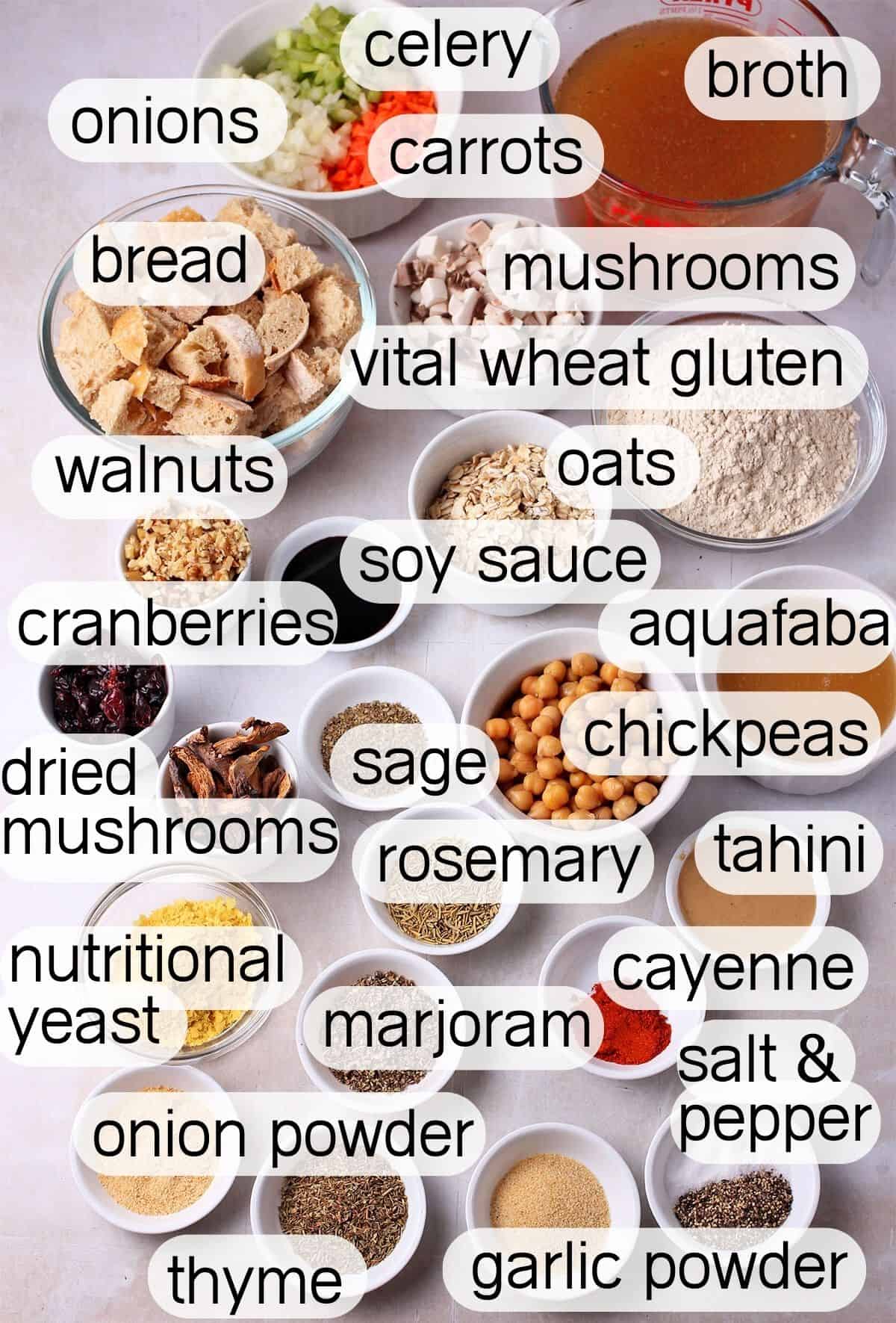
Vital wheat gluten - The essential ingredient in seitan dough or wheat meat that creates the meaty texture. It's the magic used for vegan tempeh burgers and vegan breakfast sausage patties.
Bread cubes - I used a small loaf of crusty sourdough bread for the stuffing. Any French bread or baguette is a great option. Let softer bread dry out before using.
Chickpeas - Reserve half a cup of the liquid when you drain the can of chickpeas. White beans, like cannellini, plus the liquid, are a good substitute.
Mushroom powder - If you can't find mushroom powder, grind dried mushrooms in a spice or clean coffee grinder.
Tahini - I updated this recipe to include tahini, which improves the seitan's texture. Tahini, a sesame seed paste, is a natural oil. Buy or make homemade tahini. It's the best!
Walnuts - Omit nuts if desired. Substitutes include pecans or hazelnuts.
Please see the recipe card at the bottom of this post for the complete list of ingredients with measurements plus recipe instructions.
📖 Recipe Variations
- Adjust any of the spices as desired. Another option is using poultry seasoning rather than thyme, marjoram, and sage individually.
- Dried cranberries are optional. Dried apricots or leaving fruit out is your call.
- If you aren't fond of bread dressing, double the bulgur cranberry dressing I use for stuffed butternut squash.
🔪 Step-by-Step Instructions
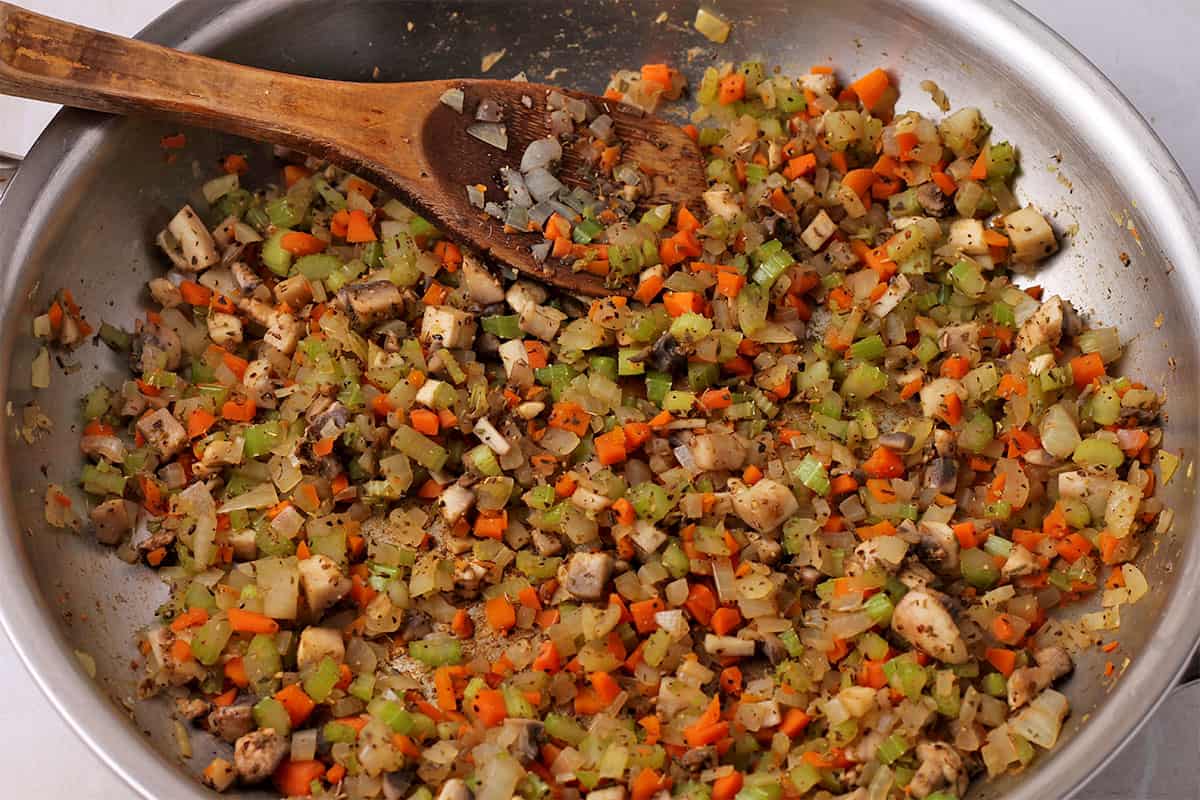
Step 1: Cook the vegetables and spices.
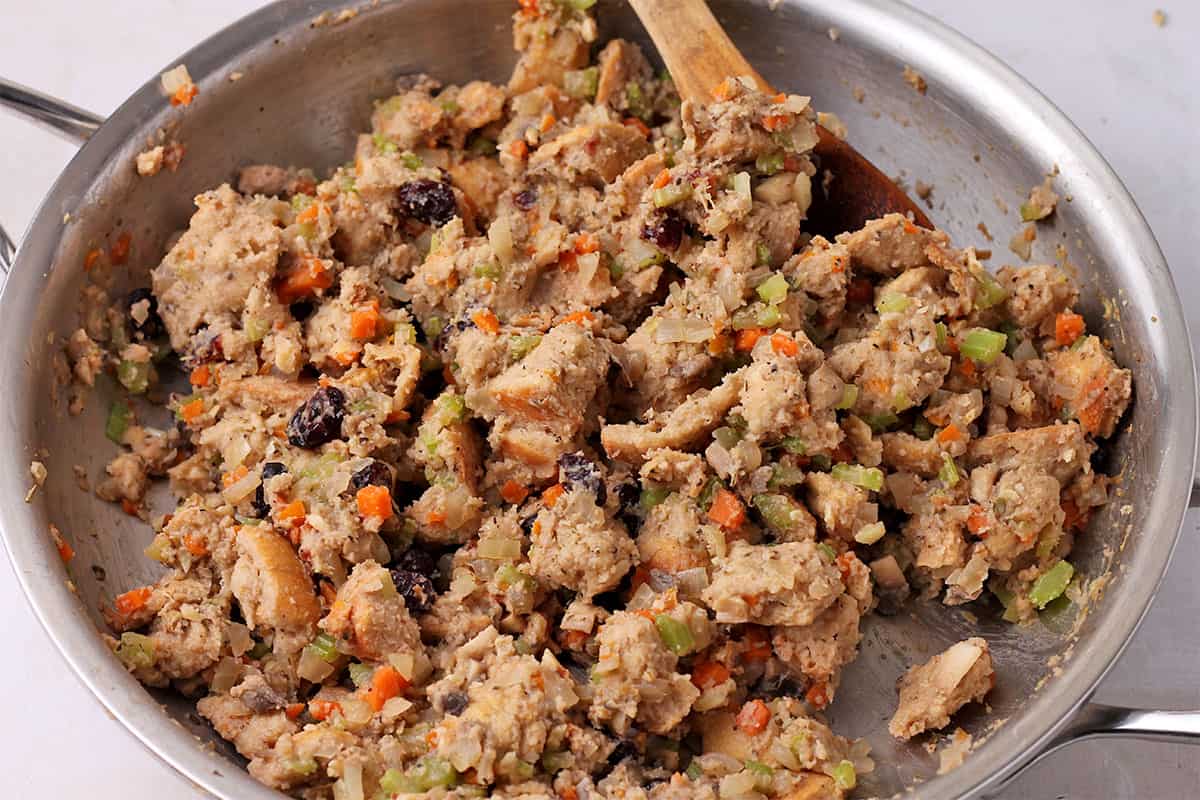
Step 2: Remove from heat. Stir in cranberries, walnuts, bread cubes. Moisten with vegetable broth.
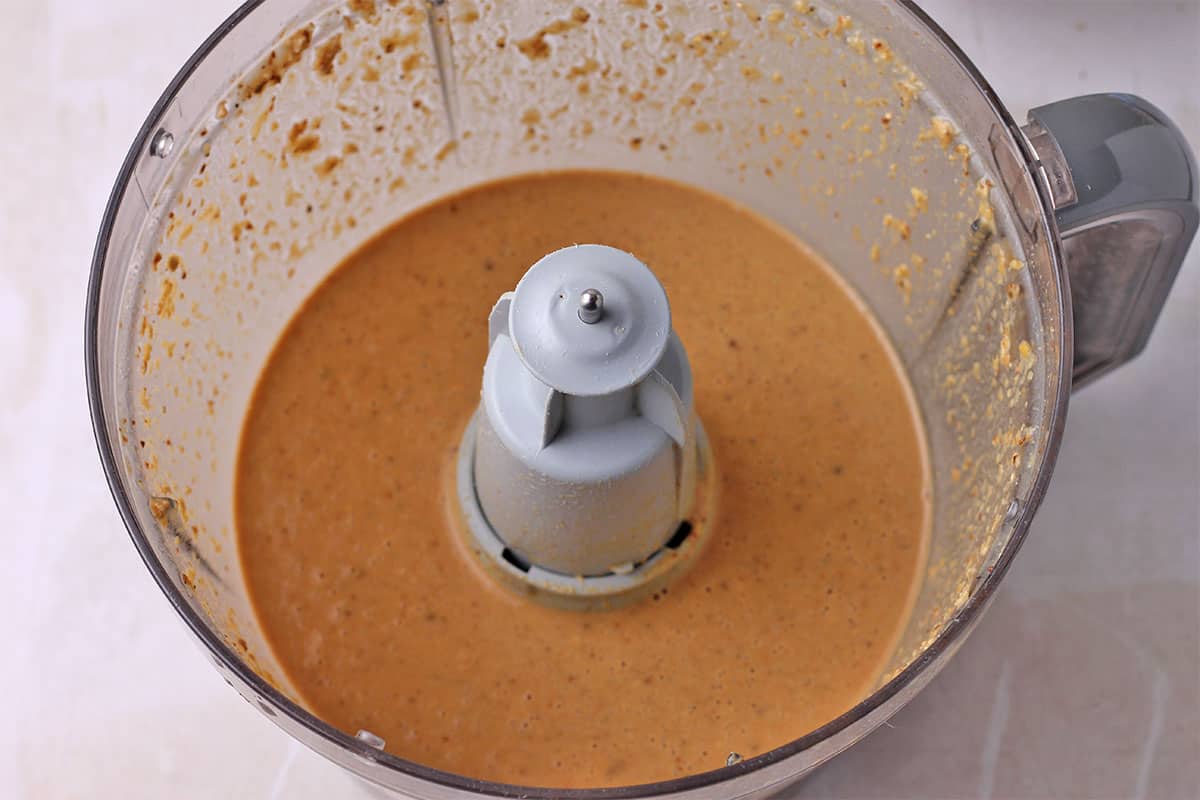
Step 3: Combine the oats, chickpeas, and wet ingredients in a food processor.
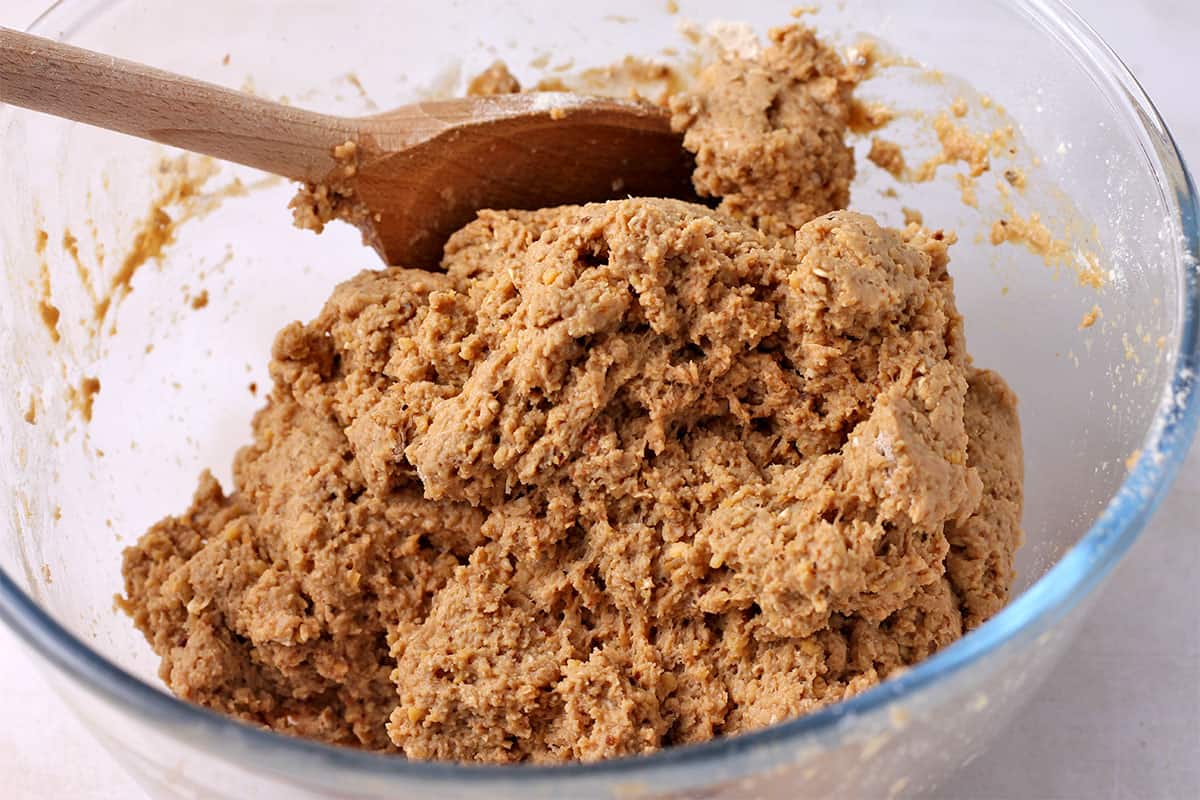
Step 4: Combine the dry ingredients, then the chickpea mixture to form a dough. Knead for 2 minutes.
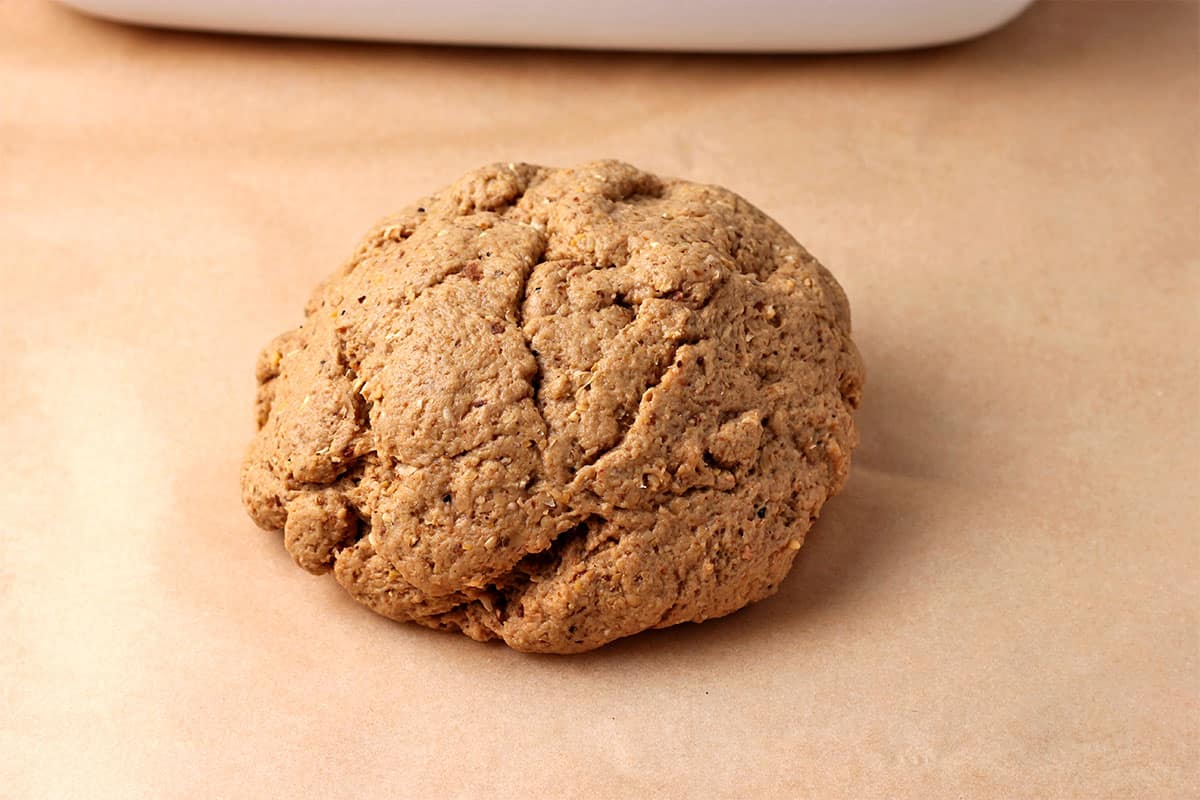
Step 5: Lay the dough on a large piece of parchment paper.
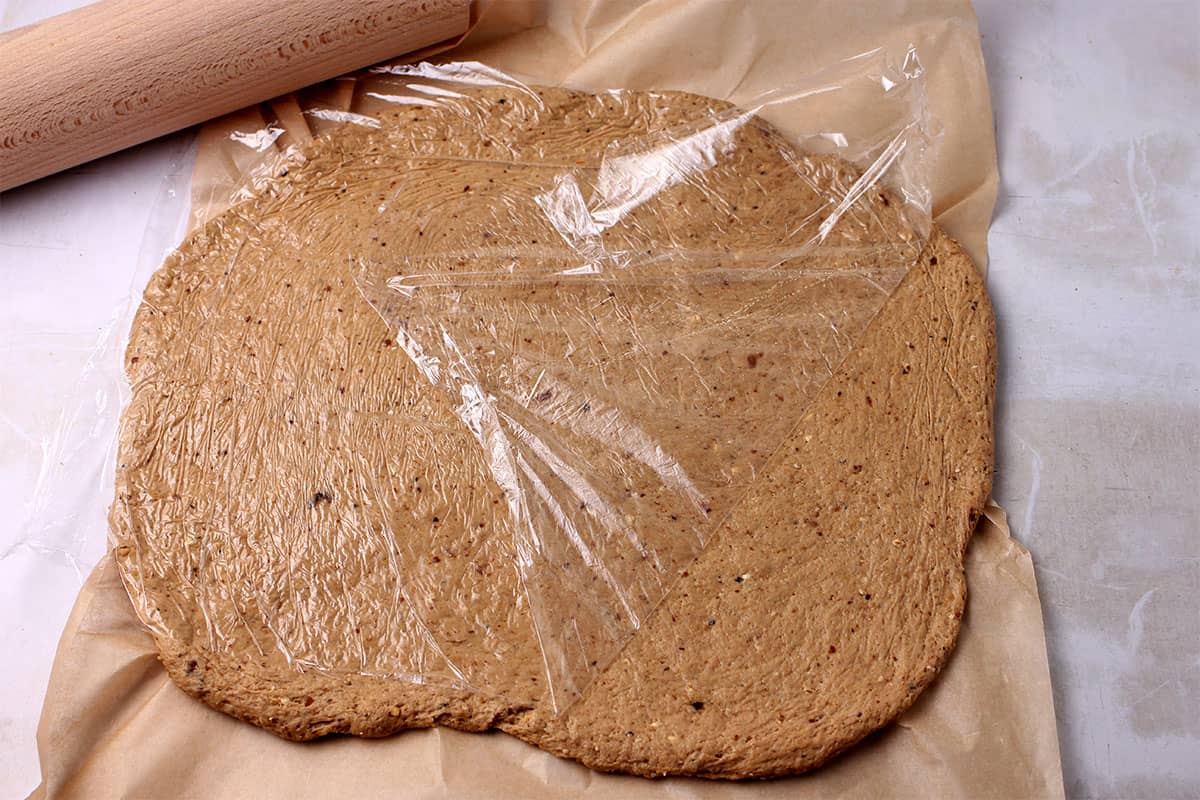
Step 6: Lay cling film over the top and roll a seitan rectangle.
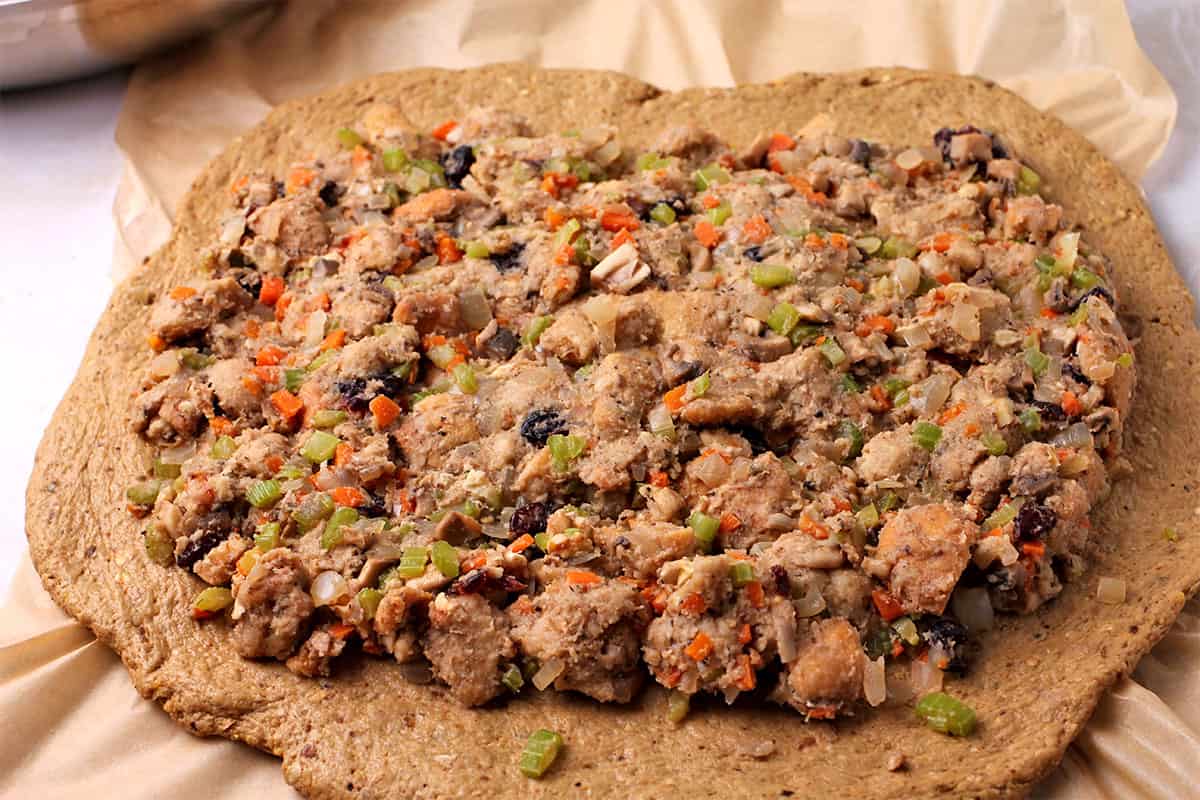
Step 7: Spread the dressing. Leave an edge of dough.
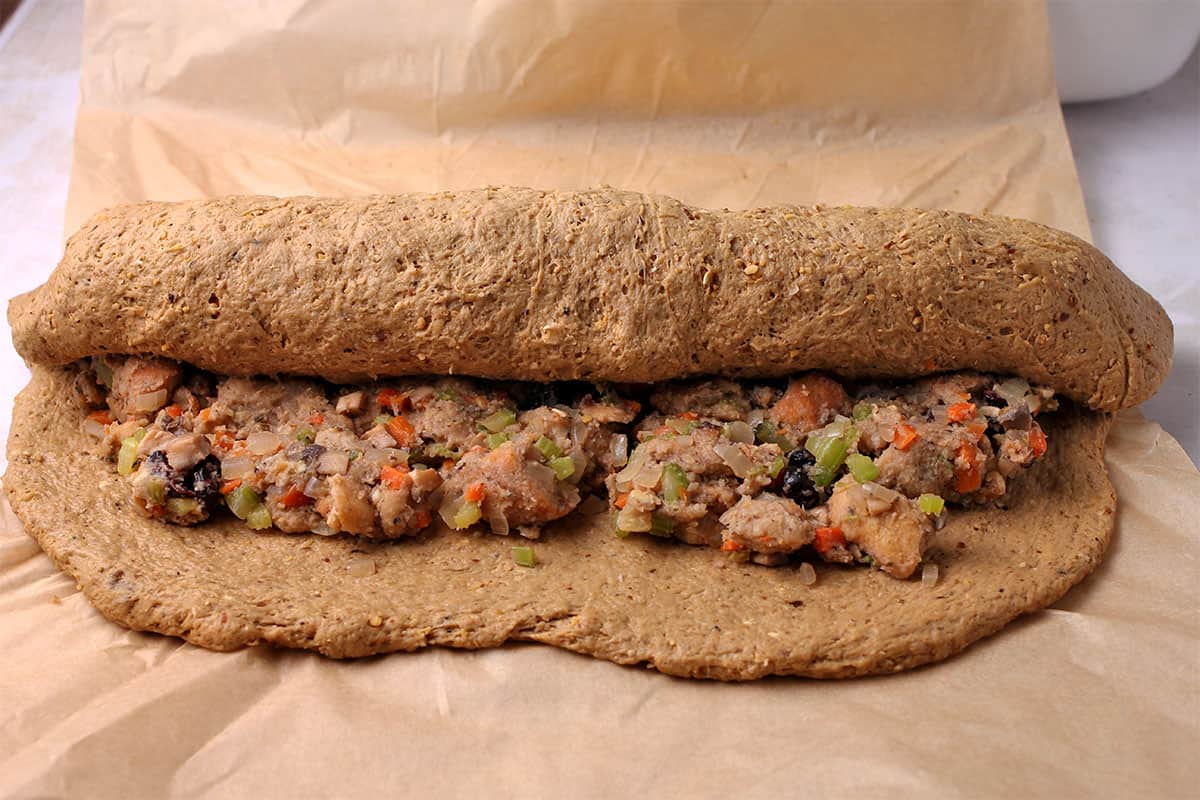
Step 8: Roll the roast lengthwise, jelly roll style.
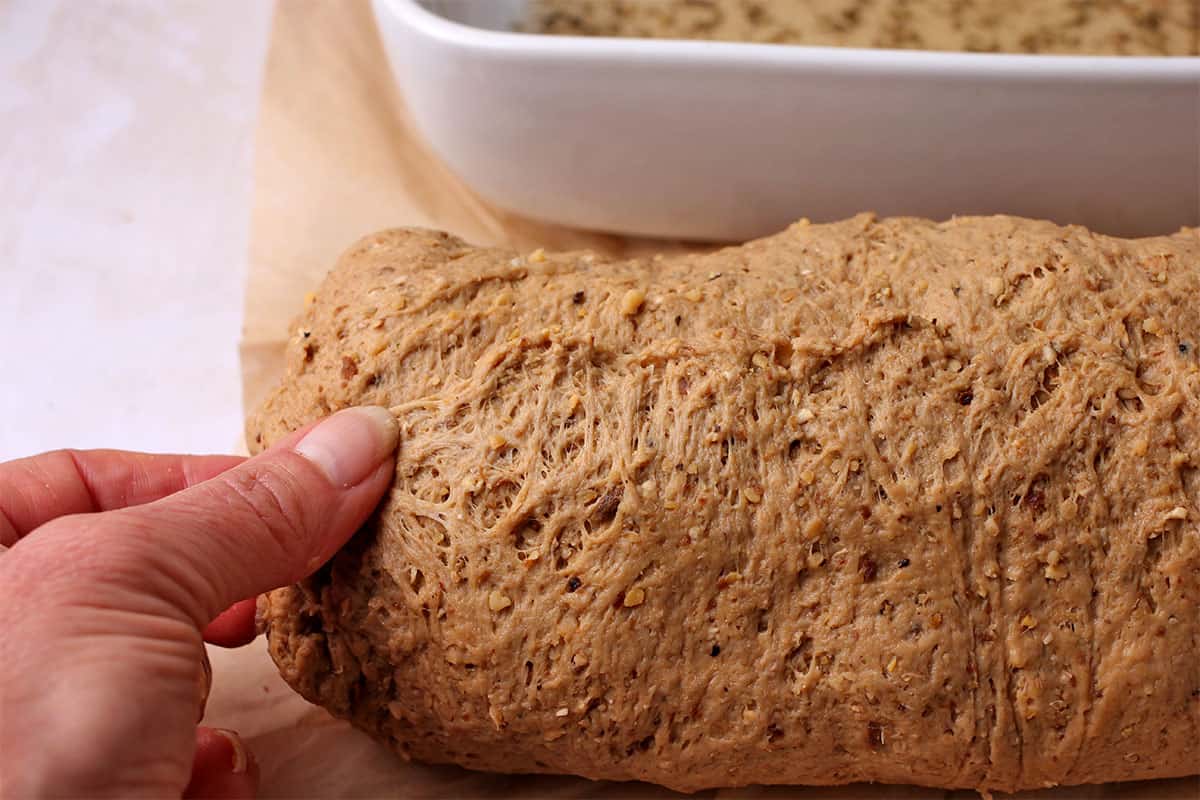
Step 9: Fold the ends toward the long seam and press to seal.
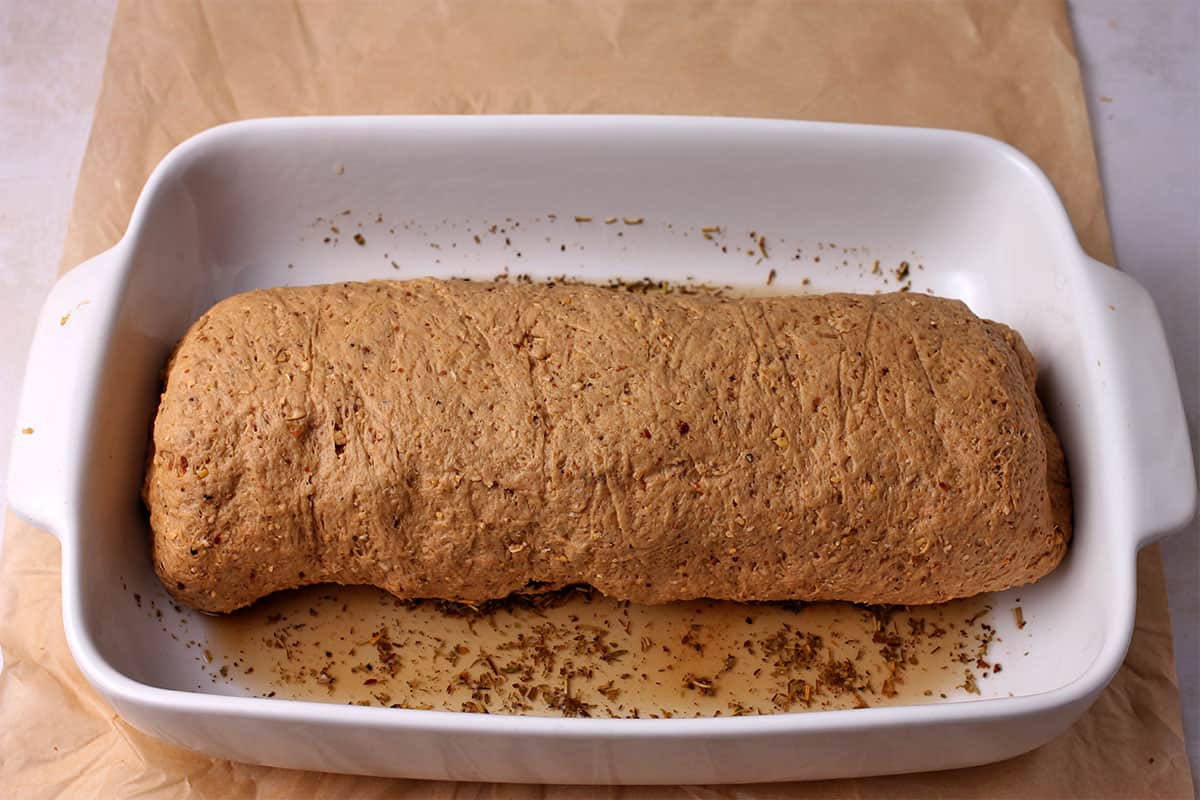
Step 10: Add basting liquid and place the roast in the baking dish. Brust basting liquid over the top.
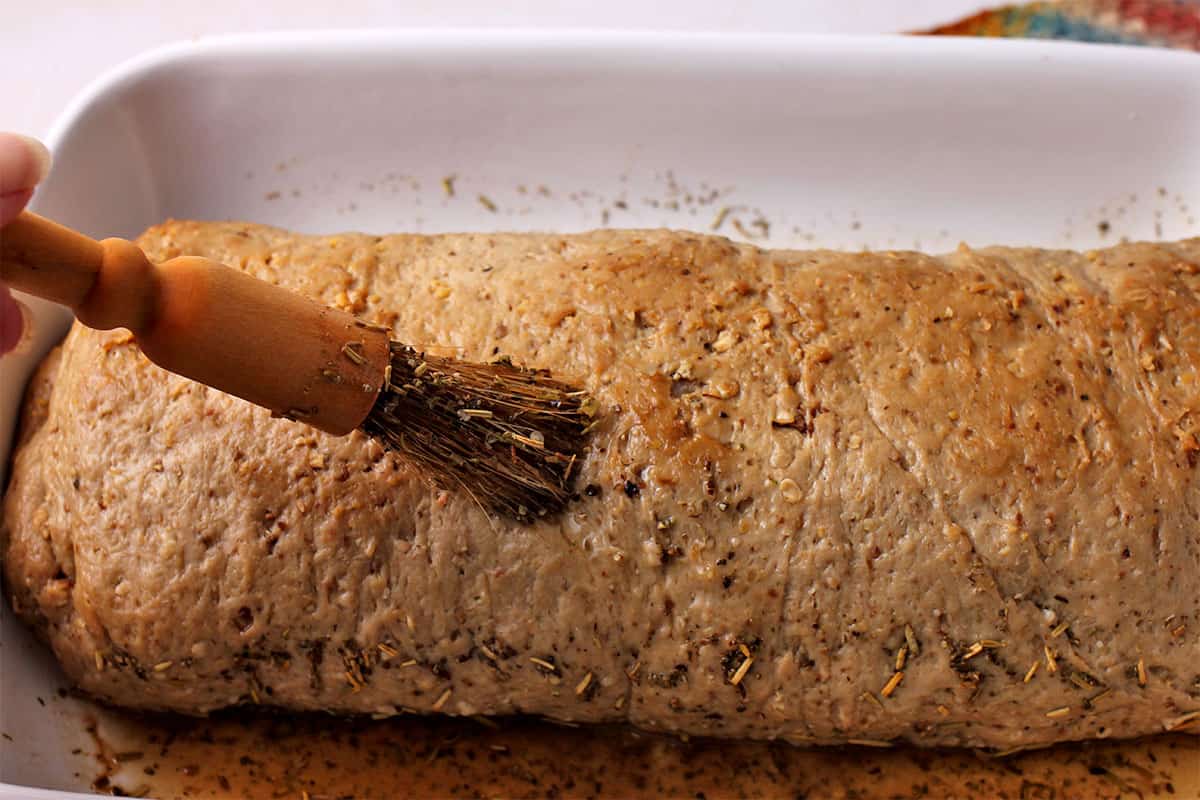
Step 11: Cover tightly in foil. Bake for 25 minutes and baste again. Bake another 25 minutes.
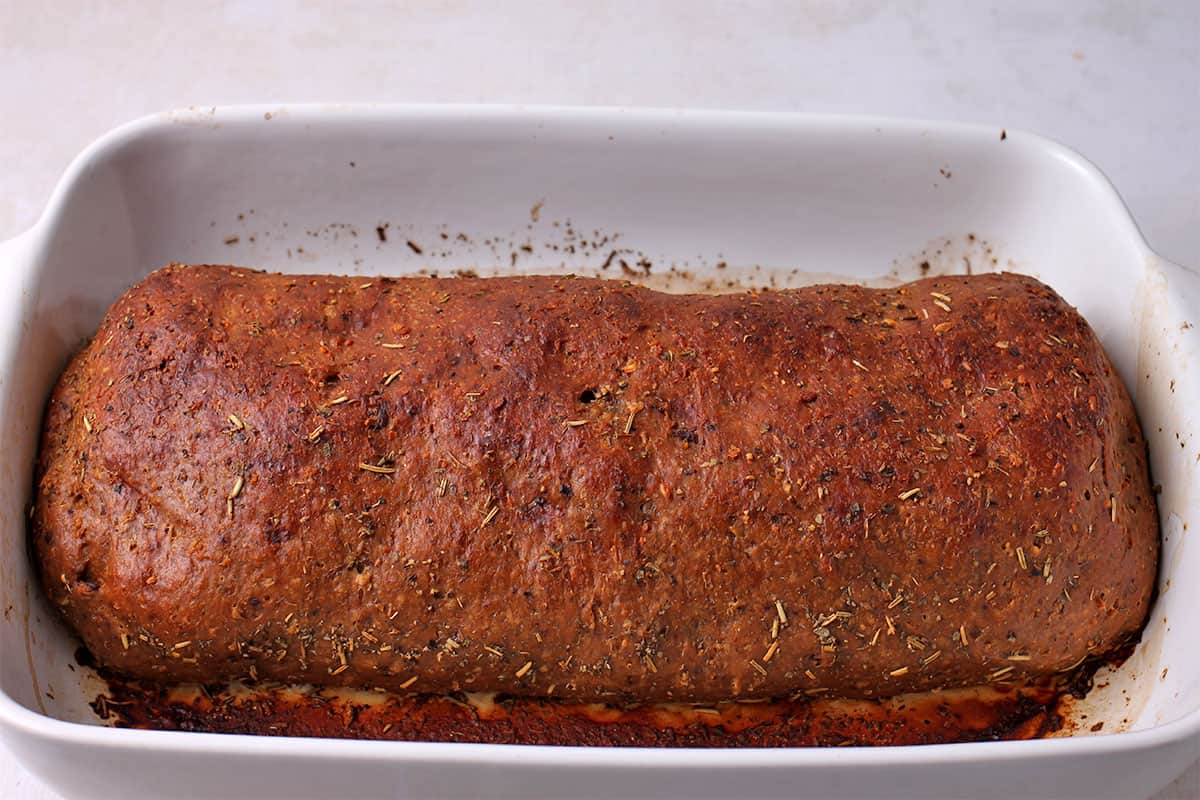
Step 12: Bake uncovered for 25-30 minutes until firm and brown. Baste a few times.
⏲️ Pro Tips
- Use a large glass baking dish or roasting pan. A baking sheet doesn't have the depth to hold the brazing liquid.
- Consider the size of the baking dish when making the seitan roast. It can touch the sides a little. If you force it to fit, it can test the seams, and we don't want the dressing to escape.
- Lay the dough on a large piece of parchment paper or plastic and cover it with another large piece of plastic wrap (cling film). The top piece keeps the rolling pin clean, and the bottom makes it easy to form the roast and transfer it to another pan.
- Tightly cover the baking dish with tin foil. I used 2 pieces to cover the length and then the width. This encourages steaming of the seitan roast for the first part of baking.
🍴 Serving Suggestions
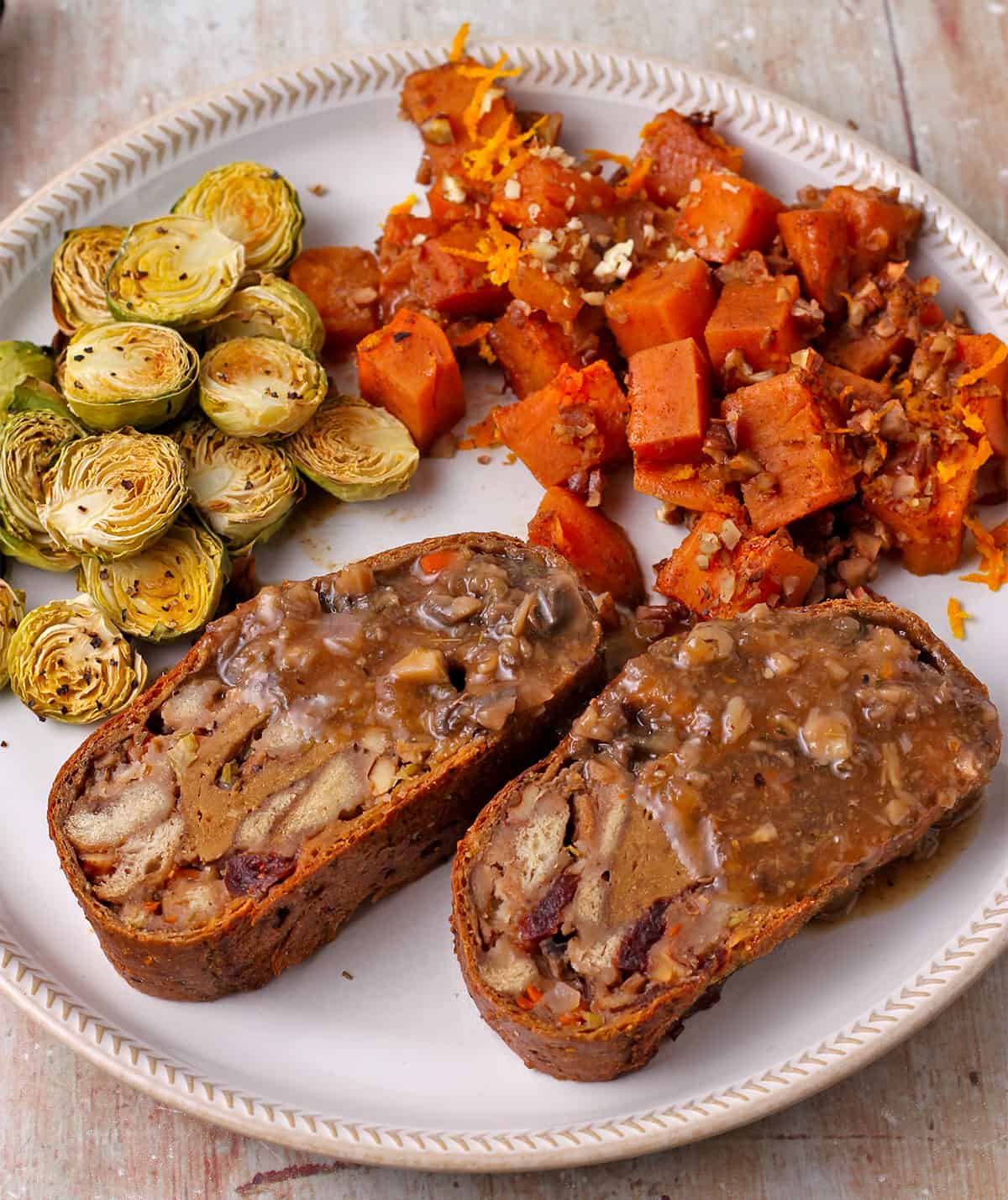
After baking, cover the roast loosely with foil and let it rest for 10-15 minutes. Cut the roast into thick slices and serve with vegan gravy or shake it up and try cauliflower Béchamel white sauce.
💭 Frequently Asked Questions
Save time on the big day by making the stuffing and braising liquid a day ahead. Blend the wet ingredients for the seitan roast and store them in the fridge until you are ready to roll. Grab a large mixing bowl and mix the dry ingredients. This saves a ton of prep time on cooking day. I made the entire stuffed seitan roast a day ahead and then reheated the slices in the oven. It was moist and delicious.
Wrap leftover vegan roast, including individual slices, loaf style in tin foil. Keep it in the refrigerator for 3-5 days. I don't recommend freezing leftovers, as the dressing can get quite moist after thawing and reheating.
Slice the remaining stuffed seitan roast and wrap it tightly in foil. Slices reheat more evenly than a whole roast. Reheat it in a preheated oven (400 F.). You can do this for all or part of the leftover roast as needed.
Vital wheat gluten provides the elasticity needed to make the meaty texture. Unfortunately, I've not found a suitable substitute for making vegan seitan roast or any seitan recipe.
🥣 Vegan Side Dish Suggestions
Hungry for more? Subscribe to my newsletter and follow me on Facebook, Pinterest, and Instagram for all the newest recipes!
👩🏻🍳 Recipe
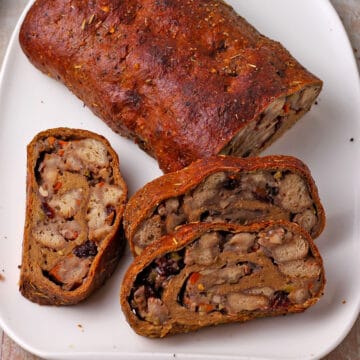
Vegan Stuffed Seitan Roast
Rate this Recipe:
Ingredients
Stuffing Ingredients
- 1 medium onion - diced, 1 cup
- 1 medium carrot - peeled and diced, ½ cup
- 2 stalks celery - diced, 1 cup
- 1 cup mushrooms - chopped, 4-5 button mushrooms
- ½ teaspoon garlic powder
- 1 teaspoon thyme
- 1 teaspoon sage
- ½ teaspoon marjoram - or oregano
- ½ teaspoon salt
- ½ teaspoon black pepper
- ¼ teaspoon cayenne pepper - or paprika
- ⅓ cup dried cranberries
- ¼ cup walnuts - chopped
- 5 cups bread cubes - 1-inch cubes or smaller, see notes
- 1 - 1 ½ cups vegetable broth
Basting Liquid Ingredients
- 1 cup vegetable broth
- 1 teaspoon thyme
- 1 teaspoon sage
- 1 teaspoon rosemary
Seitan Roast Ingredients
- ⅓ cup rolled oats
- 2 tablespoons mushroom powder - see notes
- ⅓ cup nutritional yeast
- 1 cup cooked chickpeas - 1 can, reserve ½ cup liquid from can
- ½ cup aquafaba - chickpea liquid from can
- 1 tablespoon tahini
- 1 tablespoon soy sauce
- 1 cup vegetable broth
- 1 ½ cups vital wheat gluten
- 1 teaspoon garlic powder
- 1 teaspoon onion powder
- ½ teaspoon salt
- ½ teaspoon pepper
Instructions
How to make stuffing
- Heat a large skillet or frying pan over medium heat. Add the onions, carrots, and celery. Cook for 3-4 minutes to soften the veggies. Add a tablespoon of broth or water if they start to stick.
- Add the mushrooms and spices. Continue cooking until the mushrooms release their moisture (3-4 minutes).
- Turn off the heat. Mix in the cranberries and chopped walnuts. Then, add the bread cubes. Toss them with the rest of the ingredients.
- Add ½ a cup of vegetable broth and use your hand to start mixing the bread. Add more broth until you have a moist dressing that holds together.
How to make seitan
- In a small bowl or jar, mix the basting liquid. Set aside.
- Pause to preheat the oven to 400 F. (200 C.).
- Add the oats to a food processor with a sharp blade. Blend the oats for a few minutes to break them down. Then add the mushroom powder, chickpeas, aquafaba, nutritional yeast, soy sauce, and vegetable broth. Blend until smooth.
- In a medium mixing bowl, add the vital wheat gluten, garlic powder, onion powder, salt, and pepper. Mix well.
- Make a well in the center of the dry ingredients and pour in the chickpea mixture. Stir with a wooden spoon until the dry ingredients are moist.
- Use your hand to knead the dough in the bowl for 2 minutes and form a ball.
- Lay a large piece of parchment paper or cling film on a flat surface. It should be larger than the bottom of your baking dish. Place the dough ball in the center of the parchment paper. Lay a piece of cling film (plastic wrap) as big as the parchment paper over the dough ball.
- Use a rolling pin to form a rectangle a few inches longer than the length of your baking dish, about ½ inch thick.
- Remove the top layer of cling film, then spread the dressing evenly over the top. Leave about 1 ½ inches around the edges of the dough free.
- Adjust the parchment paper if necessary so the long side is in front of you. Roll the dough like a jelly roll.
- Press along the edges to seal the length of the dough. Fold the remaining ends toward the long seal and press to secure them.
- Add ¼ a cup of basting liquid to the bottom of the roasting dish. Then, carefully transfer the roast from the bottom parchment paper to the dish with the sealed side on the bottom. Brush more basting liquid over the top.
How to bake stuffed seitan roast
- Cover the dish tightly with aluminum foil (I used a second piece over the width). Place the roast in the center of the oven and bake for 25 minutes. Remove the roast and cover it with additional basting liquid. Bake another 25 minutes.
- Uncover the roast and brush on more basing liquid. Bake it, uncovered, for another 25-30 minutes until golden brown. Baste it a few more times as it bakes. The roast is done when it is brown, the top and sides are firm, and the liquid in the bottom has evaporated. If you are unsure, cut a little piece to test it.
- Remove the roast from the oven and loosely with foil. Let it rest for 10-15 minutes before slicing it.
Video
Notes
- This recipe used a 500-gram loaf of crusty sourdough bread. Let super soft bread dry before making the dressing.
- Substitute chickpeas with 1 cup of white beans. Reserve ½ a cup from the can.
- Use 2-3 teaspoons of poultry seasoning as a substitute for thyme, marjoram, and sage.
- Make mushroom powder by grinding dried mushrooms in a clean spice or coffee grinder.
- To save time, make the dressing and the chickpea mixture a day ahead.
- Store leftover roast, wrapped in foil, in the refrigerator for 4-5 days.
- Reheat in the oven at 400 F. (200 C.). Slice it first and reheat it as a loaf so the middle gets hot.
Nutrition
Nutritional information is an estimation only.


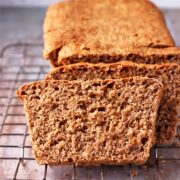

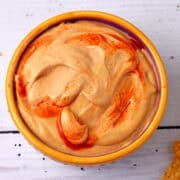
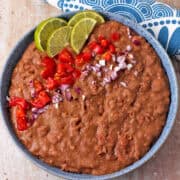
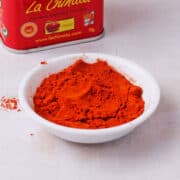
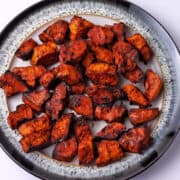
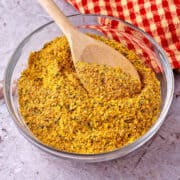
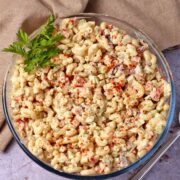
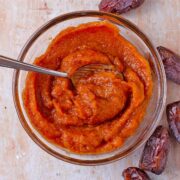
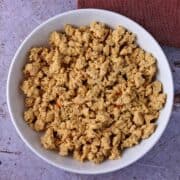
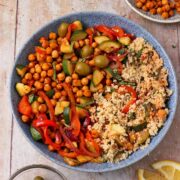
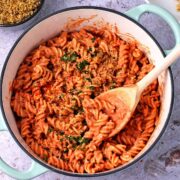
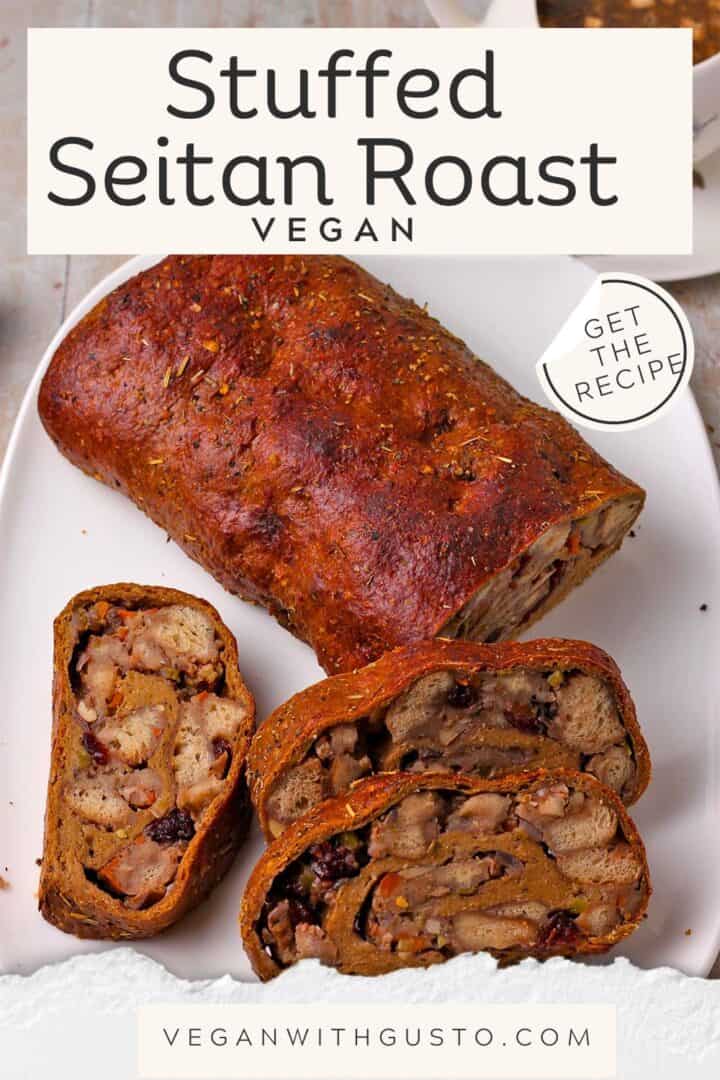
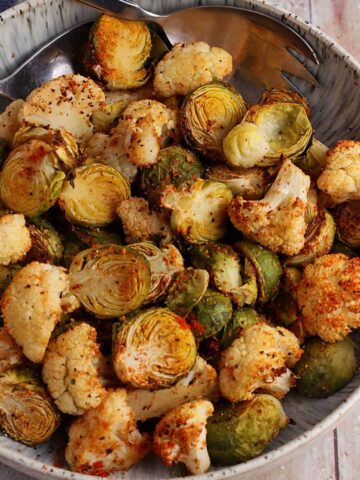
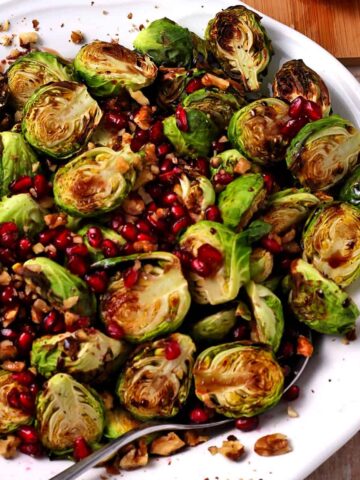
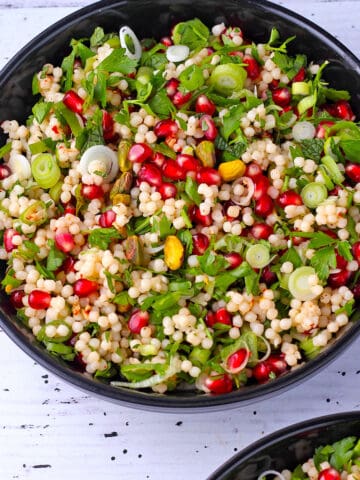
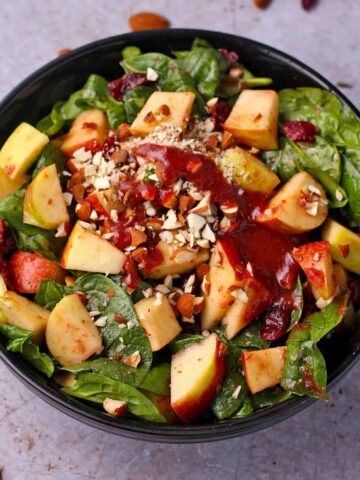
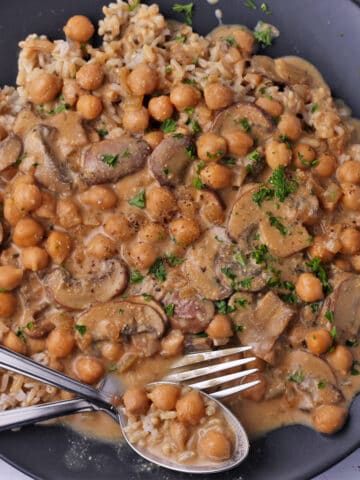

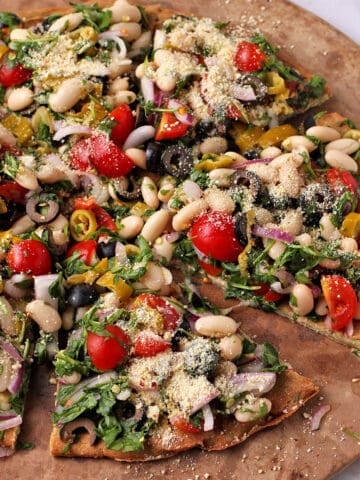


Lisa
Do you mean 1 1/2 cups vital wheat gluten or homemade Seitan? Thank you!
Denise
Hi Lisa, vital wheat gluten (the flour-like stuff). I hope I've answered your question. Let me know if you need anything else. Denise